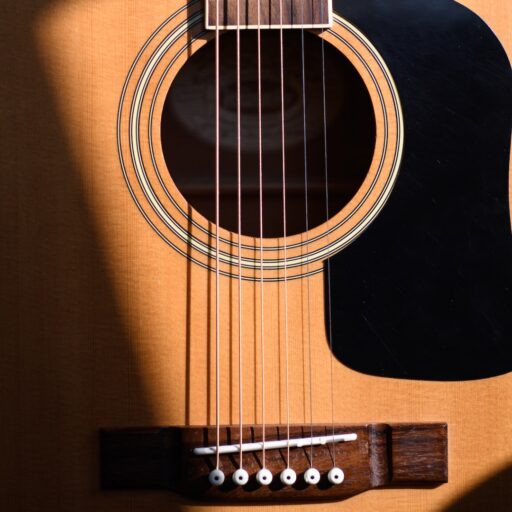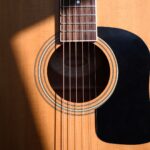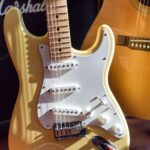Support our educational content for free when you purchase through links on our site. Learn more
8 Defunct Guitar Brands 🎸 That Shaped Music History (2025)
Ever wondered what happened to some of the coolest guitar brands that once ruled the scene but mysteriously vanished? From the futuristic Parker Guitars to the surf-rock legends Mosrite, defunct guitar brands are like hidden gems in the vast world of music gear. These brands didn’t just disappear—they left behind stories, innovations, and instruments that still inspire players and collectors today.
In this article, we’ll take you on a journey through 8 legendary defunct guitar brands, uncover why they went extinct, and reveal how their legacy lives on in modern guitars. Plus, we’ll share insider tips on spotting vintage treasures, restoring them, and even finding modern alternatives that capture their spirit. Ready to dive into the fascinating rise and fall of these guitar legends? Let’s get started!
Key Takeaways
- Defunct guitar brands like Parker, Mosrite, Univox, and Teisco revolutionized guitar design and remain highly collectible today.
- Many brands folded due to financial struggles, market shifts, and management challenges, despite producing iconic instruments.
- Vintage guitars from these brands offer unique tones and designs not found in modern mass-market guitars.
- Knowing how to authenticate, restore, and value these guitars is key for collectors and players alike.
- Modern brands and boutique builders often draw inspiration from defunct brands, keeping their spirit alive.
👉 Shop vintage-inspired and collectible guitars:
Table of Contents
- ⚡️ Quick Tips and Facts About Defunct Guitar Brands
- 🎸 The Rise and Fall: A History of Defunct Guitar Brands
- 1. Legendary Defunct Guitar Brands You Should Know
- 2. Why Do Guitar Brands Go Defunct? Common Causes and Industry Challenges
- 3. How to Spot and Collect Vintage Guitars from Defunct Brands
- 4. The Impact of Defunct Brands on Modern Guitar Design and Innovation
- 5. Alternatives to Defunct Guitar Brands: Modern Equivalents and Revivals
- 6. Maintaining and Restoring Guitars from Defunct Brands: Tips from the Pros
- 7. The Collector’s Market: Valuing and Selling Defunct Brand Guitars
- 8. Stories from the Vault: Famous Musicians Who Played Defunct Brand Guitars
- Conclusion: Why Defunct Guitar Brands Still Matter Today
- Recommended Links for Guitar Enthusiasts
- FAQ: Your Burning Questions About Defunct Guitar Brands Answered
- Reference Links and Further Reading
⚡️ Quick Tips and Facts About Defunct Guitar Brands
Welcome to the wild, wonderful world of defunct guitar brands — those legendary names that once rocked stages and studios but have since faded into history. 🎸 Whether you’re a vintage guitar hunter, a curious player, or a collector, here are some quick nuggets from the Guitar Brands™ team to get you started:
- Defunct brands often mean vintage rarity and unique designs you won’t find anywhere else. ✅
- Many defunct brands were pioneers in innovative materials and construction techniques — think Parker’s carbon fiber or Travis Bean’s aluminum necks.
- Some brands disappeared due to financial troubles, ownership changes, or simply being ahead of their time. ❌
- Vintage guitars from defunct brands can be valuable collectibles but require careful authentication and maintenance.
- Japanese brands from the 1960s and 70s like Teisco, Mosrite, and Univox offer quirky, affordable vintage vibes that still inspire today’s players.
- Restoration is often key to bringing these guitars back to life — and we’ve got tips for that later!
- Defunct brands’ designs often influence modern guitars, so their legacy lives on in your favorite current models.
Curious which defunct brands made the biggest splash? Or why some vanished despite killer guitars? Stick with us — we’re diving deep next!
For more on vintage guitar collecting, check out our Guitar Buying Guide.
🎸 The Rise and Fall: A History of Defunct Guitar Brands
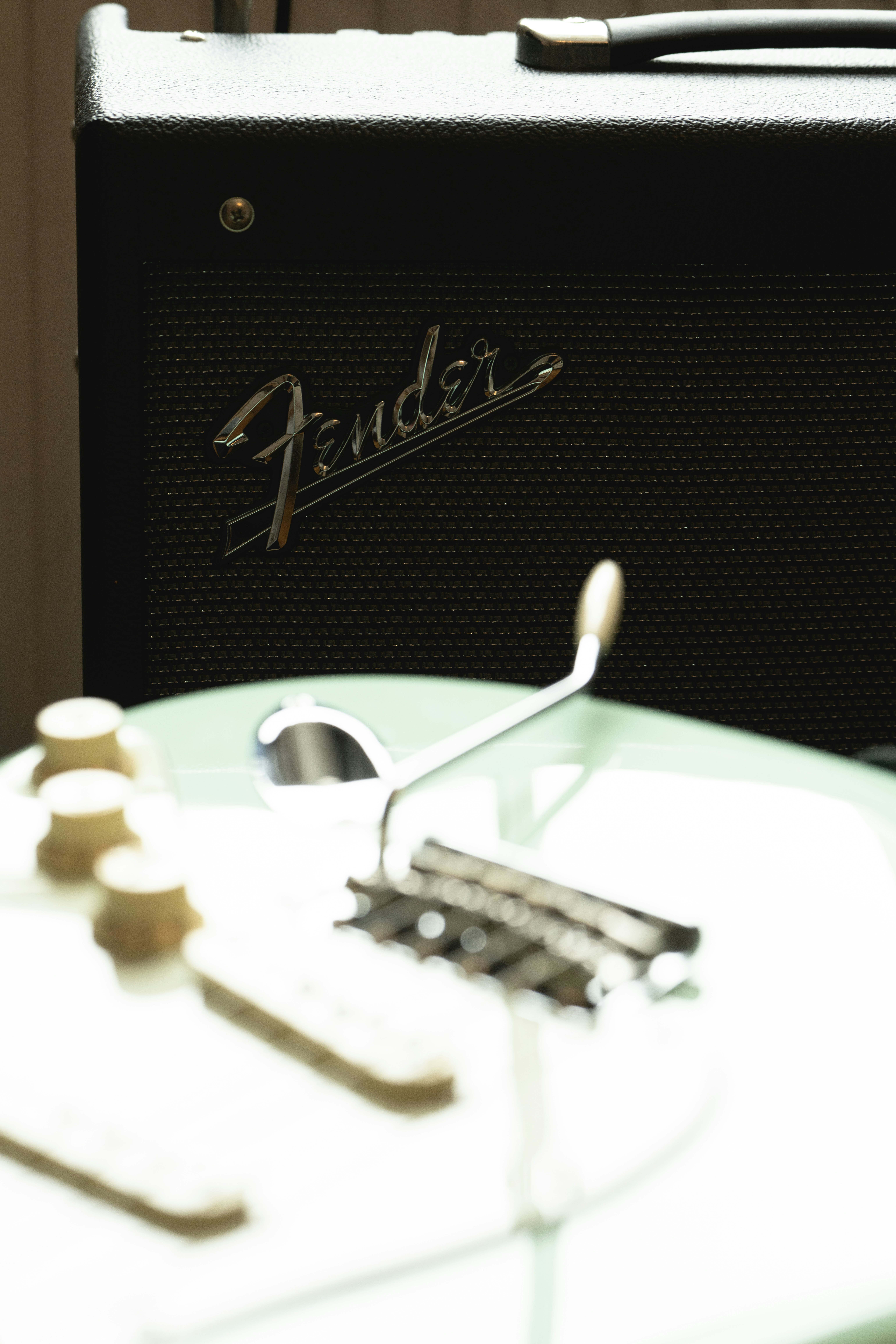
The story of defunct guitar brands is a rollercoaster of innovation, ambition, and sometimes, heartbreak. From the post-war boom to the digital age, many brands rose quickly, only to disappear just as fast. But their impact? Immortal.
The Golden Era and Its Aftermath
- 1940s–1970s: The heyday for many now-defunct brands. Companies like Harmony, Kay, and Teisco flooded the market with affordable guitars, making music accessible to millions.
- Japanese Invasion: Brands like Teisco and Mosrite brought fresh designs and budget-friendly options, often produced by factories like Matsumoku and Guyatone.
- Innovation Boom: Brands like Parker revolutionized guitar construction with carbon fiber and ergonomic designs in the 1990s.
- Market Shifts: The rise of big players like Fender and Gibson, plus economic downturns, led many smaller brands to fold or be absorbed.
Why Did They Fall?
- Financial struggles amid fierce competition.
- Ownership changes leading to brand dilution or closure.
- Changing musical tastes and technology shifts.
- Production outsourcing sometimes compromised quality, hurting reputations.
Want to geek out on the full timeline? Our Guitar Brand Guides dive into histories of many iconic brands.
1. Legendary Defunct Guitar Brands You Should Know
Ready for the VIP list? Here are some defunct guitar brands that shaped music history — and why they still matter.
1.1 The Story of Parker Guitars
| Aspect | Rating (1-10) |
|---|---|
| Design | 9 |
| Innovation | 10 |
| Playability | 8 |
| Collectibility | 9 |
| Sound Quality | 8 |
Parker Guitars burst onto the scene in the early 1990s with a futuristic approach: lightweight carbon fiber necks, sleek bodies, and active electronics. Founded by Ken Parker, these guitars were light as a feather but packed with punch. Sadly, despite cult status, Parker ceased production in the late 2010s due to financial woes.
Why we love them:
- Featherweight design that defied traditional wood-heavy guitars.
- Innovative tremolo systems and pickups.
- Perfect for shredders and tone chasers alike.
Drawbacks:
- Limited availability today, making them pricey.
- Some players find the tone too “modern” or sterile compared to vintage wood guitars.
Our take: If you find a Parker, grab it! It’s a slice of guitar innovation history.
👉 Shop Parker Guitars on:
1.2 The Mystery Behind Mosrite Guitars
| Aspect | Rating (1-10) |
|---|---|
| Design | 8 |
| Innovation | 7 |
| Playability | 7 |
| Collectibility | 9 |
| Sound Quality | 8 |
Mosrite is a cult classic, famous for its “surf rock” vibe and association with The Ventures. Their radical body shapes and fast necks made them a favorite in the 60s. Production stopped and started multiple times, with the original company folding in the 70s.
Why Mosrite rocks:
- Unique “reverse” body shape and headstock.
- Bright, twangy tone perfect for surf and garage rock.
- Handcrafted feel with vintage mojo.
Challenges:
- Quality control varied over the years.
- Parts can be hard to find for repairs.
Our story: One of our team snagged a ’66 Mosrite and swears by its “instant mojo” on stage.
👉 Shop Mosrite Guitars on:
1.3 The Rise and Demise of Univox
| Aspect | Rating (1-10) |
|---|---|
| Design | 6 |
| Innovation | 5 |
| Playability | 6 |
| Collectibility | 7 |
| Sound Quality | 6 |
Univox was a budget brand popular in the 60s and 70s, known for making affordable copies of popular Fender and Gibson models. Owned by Unicord, Univox guitars were often made by Japanese factories like Matsumoku.
Why Univox mattered:
- Made electric guitars accessible to beginners and budget players.
- Some models have cult followings for their raw sound and vintage vibe.
Downsides:
- Build quality was hit-or-miss.
- Brand disappeared as competition increased and quality standards rose.
Pro tip: Look for vintage Univox basses — they’re surprisingly solid and collectible.
👉 Shop Univox Guitars on:
1.4 The Unique Legacy of Teisco
| Aspect | Rating (1-10) |
|---|---|
| Design | 7 |
| Innovation | 6 |
| Playability | 6 |
| Collectibility | 8 |
| Sound Quality | 6 |
Teisco is the poster child for quirky 1960s Japanese guitars. Known for wild designs, odd electronics, and affordability, Teisco guitars have become beloved vintage oddities.
Why Teisco is cool:
- Distinctive, colorful designs that stand out on any stage.
- Great for players who want retro vibe without breaking the bank.
- Often made by Matsumoku, known for solid craftsmanship.
Watch out:
- Electronics can be quirky or unreliable.
- Some models require restoration.
Our anecdote: We once restored a Teisco Del Rey for a client who loved its “garage band charm” — it sounded surprisingly good after some TLC!
👉 Shop Teisco Guitars on:
2. Why Do Guitar Brands Go Defunct? Common Causes and Industry Challenges
Ever wonder why so many guitar brands vanish? It’s not just bad luck — it’s a complex mix of factors:
Financial and Market Pressures
- Competition: Giants like Fender, Gibson, and Yamaha dominate, squeezing smaller brands.
- Economic downturns: Recessions hit discretionary spending hard, shrinking guitar sales.
- Ownership changes: Mergers and acquisitions can kill brands or absorb them.
Production and Quality Issues
- Outsourcing pitfalls: Moving production overseas can reduce costs but sometimes hurts quality and brand reputation.
- Inconsistent quality: Brands that can’t maintain standards lose customer trust fast.
Changing Musical Trends
- Shifts in genre popularity: Brands tied to specific styles (e.g., surf rock) may fade when tastes change.
- Technological evolution: Brands slow to innovate or adapt to new tech risk obsolescence.
Internal Challenges
- Management missteps: Poor business decisions or lack of vision can sink a brand.
- Limited marketing: Without strong promotion, even great guitars can go unnoticed.
Bottom line: The guitar market is a tough gig — only the adaptable and well-managed survive.
For a deep dive into guitar brand histories, visit our Guitar Brand Guides.
3. How to Spot and Collect Vintage Guitars from Defunct Brands
Hunting down a vintage guitar from a defunct brand? Here’s how to separate the gems from the junk:
Step 1: Research the Brand and Model
- Use resources like Vintage Guitar Magazine and Reverb to learn about the brand’s history and typical specs.
- Check serial numbers and factory markings to verify authenticity.
Step 2: Inspect Condition Thoroughly
- Look for cracks, neck warps, and fret wear.
- Test electronics and hardware for functionality.
- Beware of heavy modifications or non-original parts.
Step 3: Evaluate Playability and Sound
- Play the guitar or ask for sound samples.
- Some vintage guitars may need setup or restoration to shine.
Step 4: Assess Market Value
- Compare recent sales on platforms like Reverb and eBay.
- Consult with vintage guitar dealers or appraisers.
Step 5: Consider Restoration Carefully
- Minor repairs can boost value and playability.
- Major modifications may reduce collector appeal.
Pro tip: Join forums like The Gear Page to connect with fellow collectors and get advice.
4. The Impact of Defunct Brands on Modern Guitar Design and Innovation
Though many defunct brands have vanished, their DNA lives on in today’s guitars:
Innovation Legacies
- Parker’s carbon fiber necks inspired modern lightweight designs.
- Travis Bean’s aluminum necks paved the way for alternative materials.
- Teisco and Mosrite’s quirky shapes influence boutique builders seeking unique aesthetics.
Design Influence
- Radical body shapes and electronics from defunct brands push current makers to experiment beyond the classic Strat or Les Paul templates.
- Affordable, entry-level designs from brands like Univox helped democratize guitar playing, a philosophy embraced by modern brands like Squier and Epiphone.
Market Lessons
- The rise and fall of these brands teach current manufacturers about balancing innovation with quality and market demands.
Want to see these influences in action? Check out our Guitar Brands Showcase for modern guitars inspired by vintage legends.
5. Alternatives to Defunct Guitar Brands: Modern Equivalents and Revivals
Missing a defunct brand’s vibe? Here’s where to look for modern guitars that capture their spirit:
| Defunct Brand | Modern Equivalent or Revival | Notes |
|---|---|---|
| Parker | Kiesel, Strandberg | Lightweight, ergonomic, innovative materials |
| Mosrite | Eastwood Guitars | Reissues and inspired models with vintage flair |
| Univox | Squier by Fender | Affordable, beginner-friendly guitars |
| Teisco | Eastwood Guitars, Reverend | Quirky designs, vintage-inspired |
| Travis Bean | Kiesel, Aluminum Neck Builders | Aluminum necks and modern materials |
Revival Attempts
- Some brands like D’Angelico and Duesenberg have been revived with modern manufacturing but vintage aesthetics.
- Charvel and Kramer have bounced back after periods of dormancy.
Boutique Builders
- Many boutique luthiers draw inspiration from defunct brands, offering custom guitars with vintage soul and modern reliability.
Explore more in our Guitar Brand Guides.
6. Maintaining and Restoring Guitars from Defunct Brands: Tips from the Pros
Got your hands on a vintage defunct-brand guitar? Here’s how to keep it rocking:
Inspection and Assessment
- Check for structural damage: cracks, loose joints, neck angle.
- Test electronics and hardware for corrosion or failure.
Cleaning and Setup
- Use gentle cleaning products designed for vintage instruments.
- Replace old strings with appropriate gauges.
- Adjust truss rod, action, and intonation carefully.
Electronics and Hardware
- Clean pots and switches with contact cleaner.
- Consider replacing worn pickups with vintage-correct replacements if originals are dead.
Professional Help
- For major repairs, seek luthiers experienced with vintage guitars.
- Avoid over-restoration — preserving originality is key for value.
Storage Tips
- Keep guitars in stable humidity and temperature conditions.
- Use quality cases or gig bags.
Our personal story: One of our team restored a 1967 Univox bass with a cracked neck — after expert repair, it played better than new and became a studio favorite!
For more restoration tips, visit our Guitar Buying Guide.
7. The Collector’s Market: Valuing and Selling Defunct Brand Guitars
Thinking of buying or selling a defunct brand guitar? Here’s the lowdown:
What Drives Value?
- Rarity: Limited production runs or surviving examples.
- Condition: Original parts and minimal wear boost prices.
- Historical significance: Association with famous players or events.
- Brand reputation: Some defunct brands have cult followings.
Selling Tips
- Get a professional appraisal or use online marketplaces like Reverb for pricing benchmarks.
- Provide detailed photos and honest condition descriptions.
- Highlight provenance or unique features.
Buying Tips
- Beware of fakes or heavily modified guitars.
- Ask about return policies when buying online.
- Factor in restoration costs.
Market Trends
- Vintage Japanese brands like Teisco and Mosrite have seen rising interest.
- Parker guitars are increasingly collectible due to limited availability.
Want to dive into the collector scene? Join forums like Vintage Guitar Forum or check out Reverb’s vintage section.
8. Stories from the Vault: Famous Musicians Who Played Defunct Brand Guitars
Nothing brings a brand to life like the legends who wielded their instruments. Here are some iconic pairings:
The Ventures and Mosrite
The Ventures made Mosrite guitars famous with their surf rock hits. Their signature “Ventures Model” featured a fast neck and bright tone that defined an era.
Ken Parker and Parker Guitars
Ken Parker himself showcased his designs, pushing the boundaries of guitar tech. Players like Joe Satriani and Steve Howe have been spotted with Parkers, cementing their cult status.
Univox and Punk Rock
Univox guitars found a home in the hands of early punk and garage bands, prized for their raw, aggressive sound and affordability.
Teisco and Garage Bands
Teisco’s quirky guitars were staples for many 60s garage bands, adding character and charm to their sound.
Want to explore more guitar legends and their gear? Check out our Guitar Brands Showcase for stories and gear rundowns.
Conclusion: Why Defunct Guitar Brands Still Matter Today
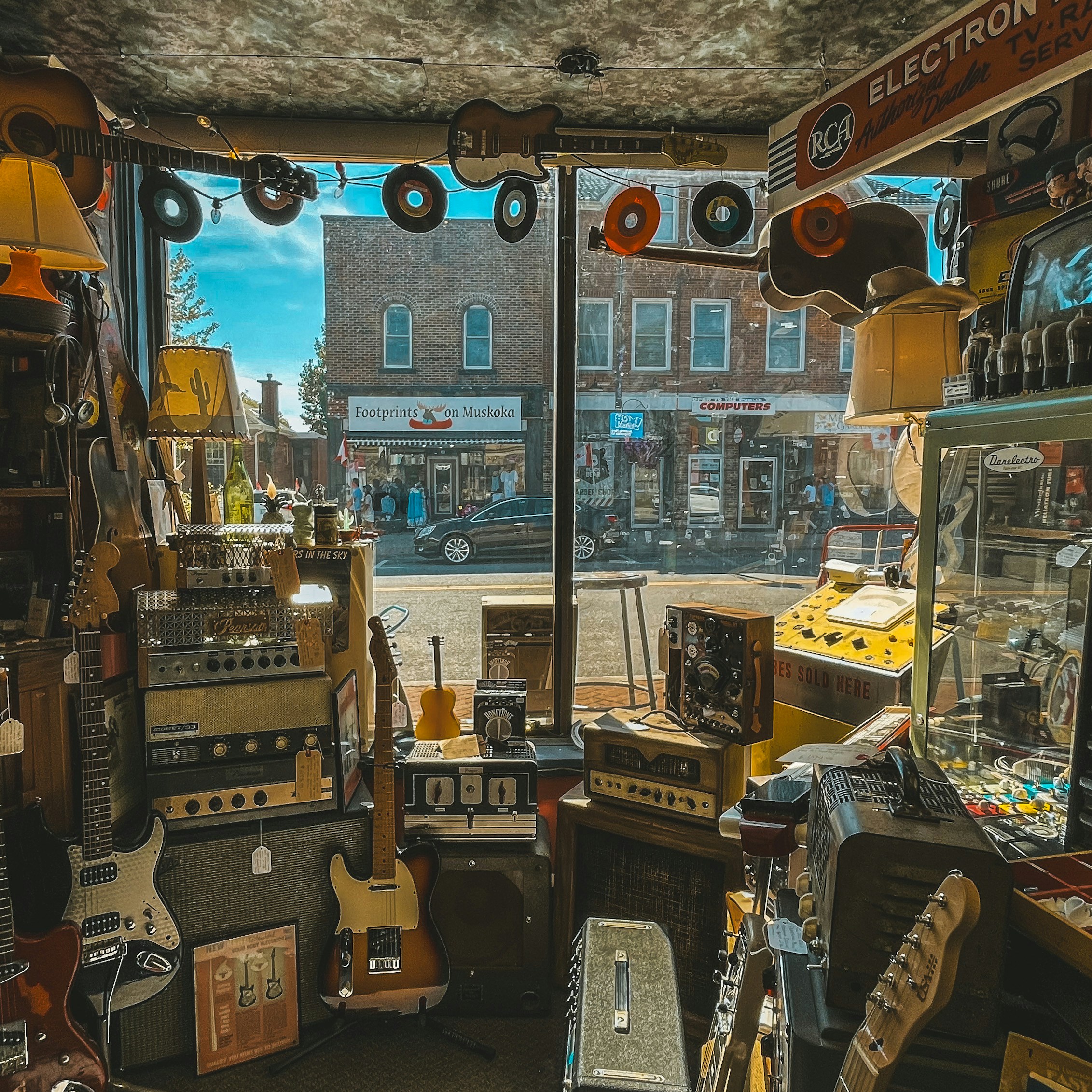
So, what’s the final chord on defunct guitar brands? Despite their disappearance from the current market, these brands remain vital threads in the fabric of guitar history and innovation. From Parker’s carbon fiber marvels to Mosrite’s surf rock legends, each defunct brand tells a story of creativity, risk-taking, and the ever-changing tides of the music industry.
Summing Up the Stars
- Parker Guitars: A bold experiment in design and materials, offering lightweight playability and futuristic aesthetics. Positives include innovation and collectibility; negatives are limited availability and a tone that might not suit traditionalists. We confidently recommend Parker guitars for players seeking something truly unique and forward-thinking.
- Mosrite: The quintessential surf guitar with a cult following, perfect for players chasing that vintage twang and vibe. Its quirks can be a challenge but add to its charm.
- Univox: A budget-friendly gateway to vintage tone, with some models gaining collector interest. Quality varies, so buyer beware.
- Teisco: Quirky, colorful, and affordable vintage gems that bring character and history to any collection. Restoration may be needed, but the payoff is worth it.
Closing the Loop
Remember those questions about why brands vanish despite killer guitars? It boils down to a mix of financial hurdles, market shifts, and management challenges — a harsh reality behind the scenes. Yet, their influence echoes in modern designs and the vintage market’s passion.
If you’re hunting for a vintage treasure or just curious about guitar history, these defunct brands offer a fascinating journey — full of surprises, stories, and sonic possibilities.
Recommended Links for Guitar Enthusiasts
Ready to explore or shop some of these legendary defunct brands and their modern equivalents? Here’s where to start:
- Parker Guitars:
- Mosrite Guitars:
- Univox Guitars:
- Teisco Guitars:
Books for Deeper Dives
- Vintage Electric Guitars: The First Fifty Years by Walter Carter — A detailed history and guide to vintage guitars, including many defunct brands.
- Japanese Electric Guitars: The 1960s and 1970s by Michael Wright — The definitive resource on Japanese brands like Teisco and Univox.
- The Guitar Player Book: 40 Years of Interviews, Gear, and Lessons from the World’s Greatest Guitarists — Includes stories and gear insights touching on vintage and defunct brands.
FAQ: Your Burning Questions About Defunct Guitar Brands Answered What are some iconic guitar brands that are no longer in production?
Several legendary brands have ceased operations but left a lasting legacy. Parker Guitars is a prime example, known for its innovative carbon fiber designs but halted production due to financial challenges. Mosrite is famous for its surf rock association and unique design but faced multiple closures. Other notable defunct brands include Univox, Teisco, Travis Bean, and Harmony. These brands shaped guitar culture in their heyday and remain sought after by collectors and players.
Which defunct guitar brands are still highly sought after by collectors today?
Collectors highly prize brands like Mosrite for their rarity and association with iconic bands like The Ventures. Parker guitars have become cult collectibles due to their innovative materials and limited production runs. Vintage Teisco models are popular for their quirky aesthetics and affordability, appealing to collectors who love offbeat designs. Travis Bean guitars, with their aluminum necks, are also prized for their uniqueness and sound. The value often depends on condition, originality, and historical significance.
Are there any defunct guitar brands that have been revived or rebooted in recent years?
Yes! Some defunct brands have been revived with modern manufacturing while honoring their heritage. For example, D’Angelico and Duesenberg have successfully rebooted, offering guitars that blend vintage aesthetics with contemporary quality. Charvel and Kramer have also seen revivals after periods of dormancy. These revivals help keep the spirit of classic designs alive while meeting modern players’ expectations.
What factors contributed to the decline and eventual demise of certain guitar brands?
The decline of many guitar brands can be attributed to a combination of:
- Financial difficulties: Intense competition and economic downturns squeezed smaller companies.
- Ownership and management issues: Changes in leadership sometimes led to strategic missteps or brand dilution.
- Market changes: Shifting musical tastes and technological advances made some designs obsolete.
- Quality control problems: Outsourcing production or inconsistent manufacturing hurt reputations.
- Marketing failures: Brands that failed to promote themselves effectively lost market share.
Understanding these factors helps collectors and players appreciate the complex stories behind these guitars.
How can I authenticate a vintage guitar from a defunct brand?
Authenticating vintage guitars involves checking serial numbers, factory stamps, and comparing specifications with reliable references. Consulting experts, vintage guitar forums, and professional appraisers can help verify authenticity. Documentation like original receipts or provenance adds credibility. Be cautious of modifications or counterfeit parts, which can affect value.
Are guitars from defunct brands good for modern playing and recording?
Absolutely! Many vintage guitars from defunct brands offer unique tones and playability that modern guitars can’t replicate. While some may require setup or restoration, their character and sound make them prized in studios and live performances. However, individual guitars vary, so testing and maintenance are key.
Reference Links and Further Reading
- List of guitar manufacturers – Wikipedia — Comprehensive overview including defunct brands.
- 1960s Japanese Guitar Brand Name Game – Drowning in Guitars — Deep dive into Japanese vintage brands like Teisco and Univox.
- Parker Guitars Logo T-Shirt – Defunct Guitar Brand – eBay Listing — Trending collectible item referencing the defunct Parker brand.
- Vintage Guitar Magazine — Trusted source for vintage guitar news and reviews.
- Reverb Vintage Guitars — Marketplace specializing in vintage and collectible guitars.
- Sweetwater — Retailer with extensive guitar catalog, including vintage and boutique brands.
- Guitar Brands Showcase – Guitar Brands™
- Guitar Buying Guide – Guitar Brands™
- Guitar Brand Guides – Guitar Brands™
Thanks for rocking through this deep dive with us! Whether you’re chasing a vintage Mosrite or dreaming of a Parker, defunct guitar brands offer a treasure trove of stories, sounds, and style that still inspire players worldwide. Keep exploring, keep playing, and keep the legacy alive! 🎸✨
